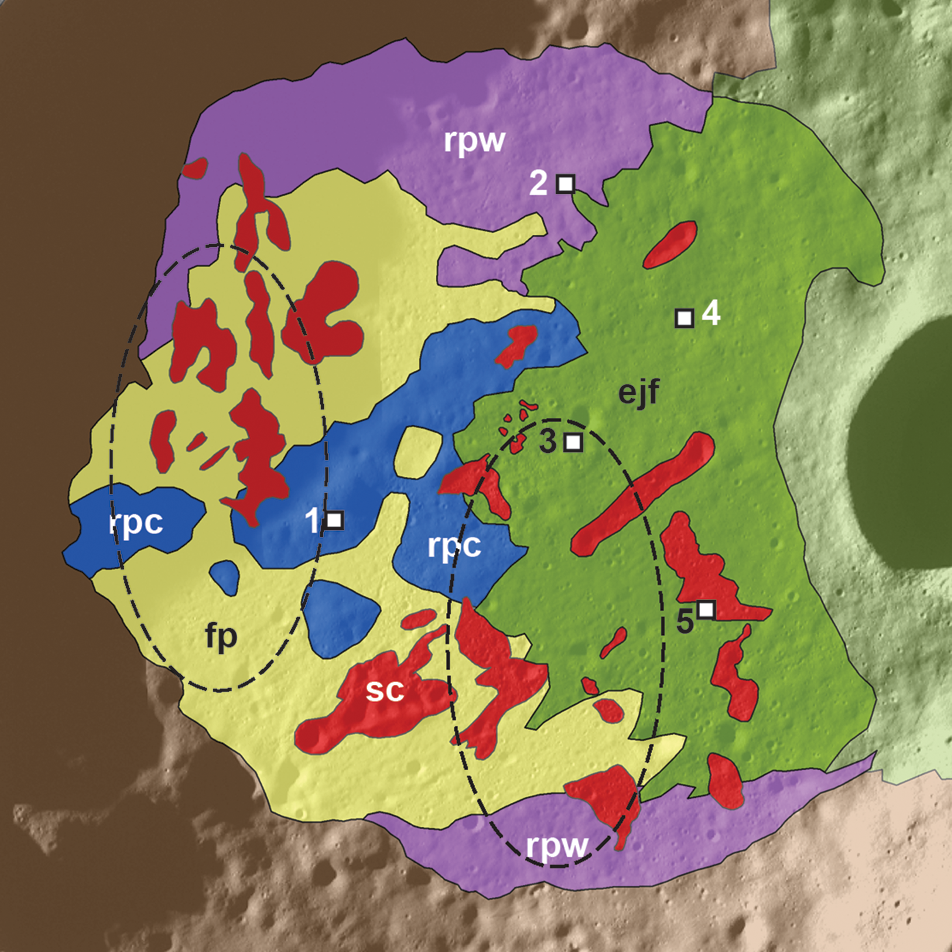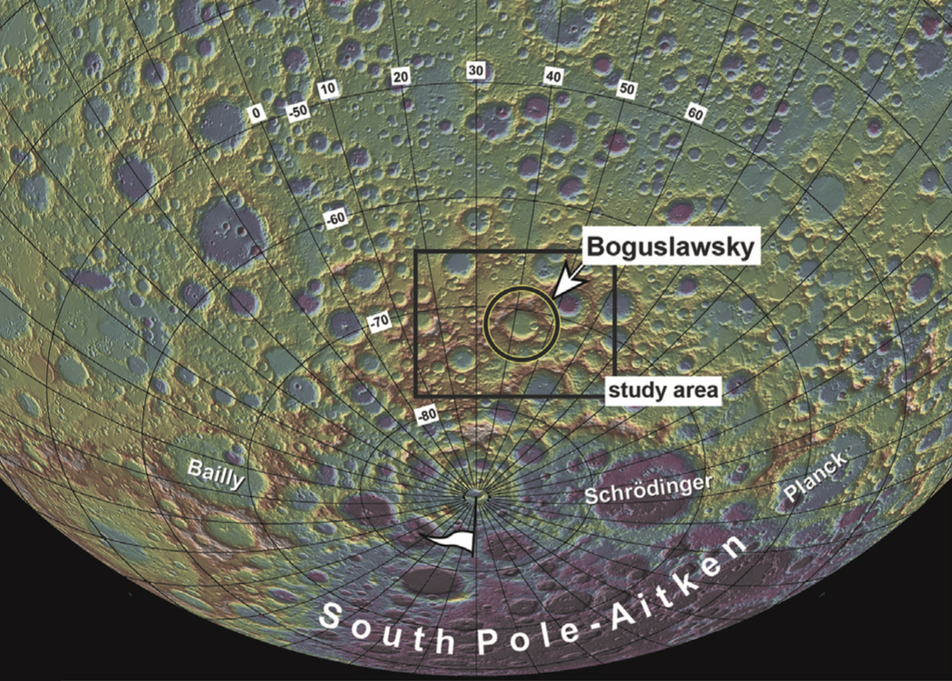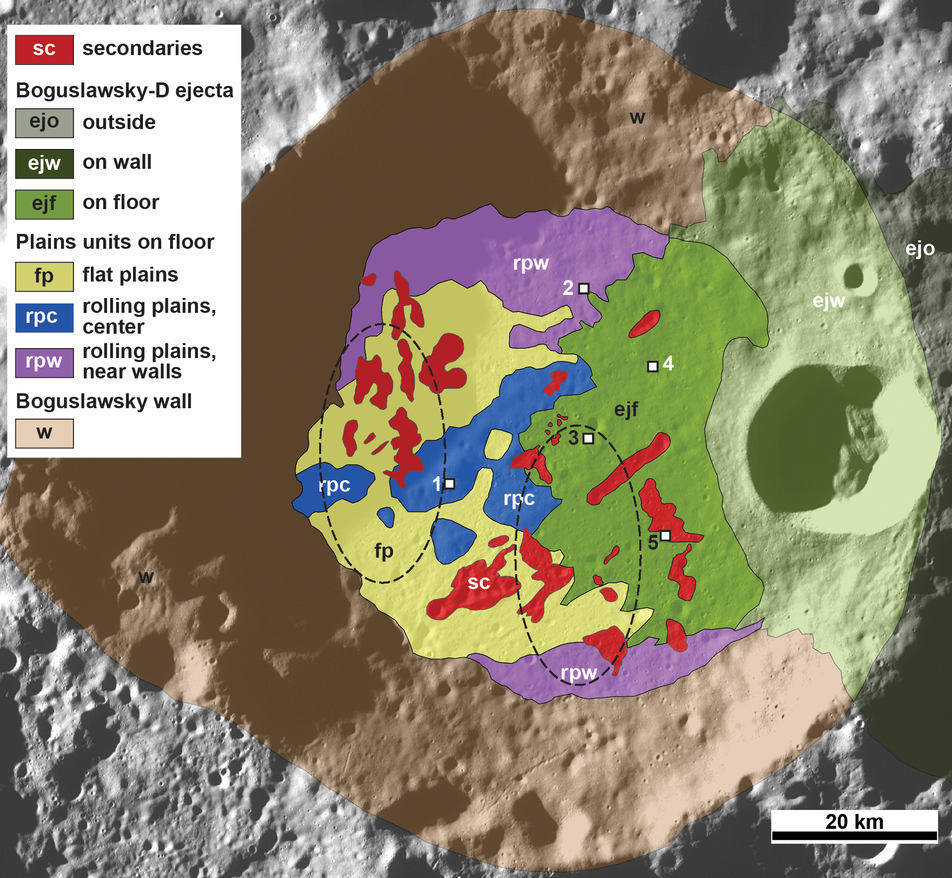
The Russian Luna-Glob mission, currently scheduled for launch in the mid-2020s, will study the physical conditions and composition of the regolith near the lunar south pole, as well as test new soft-landing technologies. The engineering constraints for the mission require that potential landing sites lie between 70-85°S and 0-60°E, and Boguslawsky crater fits the bill and was selected as the primary target. Part of the landing site selection critera included that the surface be relatively smooth (maximum of 7° slopes at a 30 m baseline) and boulder-free. Boulders that are larger than ~30-50 cm are considered serious threats to the lander. Luckily, LROC images came to the rescue! One of the primary reasons that NASA selected the LROC instrument was to assess the safety of future landing sites at high resolution (50 cm/pixel), and now these images are helping guide Russia's first return to the Moon since the Luna 24 sample return mission in 1976.

A recent paper details how LOLA topographic measurements, an LROC WAC mosaic, and LROC NAC frames (see end of post) were used to recommend two landing ellipses in Boguslawsky crater that fulfill the mission's engineering constraints. The geology of the two possible landing sites was studied to provide background information for deciding which scientific questions might be best answered at each landing site. For example, the western landing ellipse contains plains materials, which may be debris delivered from other nearby impacts, rather than rocks excavated by Boguslawsky itself. The eastern landing ellipse is covered with ejecta from the large crater (Boguslawsky D, bright geen unit ejf) on the eastern rim of the crater. Rim material was likely excavated by Boguslawsky crater from an original location as much as 10 km below the surface, making the eastern landing ellipse more scientifically attractive.

To read about the complete analysis of Boguslawsky crater as a landing site for the Luna-Glob mission, see the article:
Landing site selection for Luna-Glob mission in crater Boguslawsky by Ivanov, M. A., H. Hiesinger, A. M. Abdrakhimov, A. T. Basilevsky, J. W. Head, J.-H. Pasckert, K. Bauch, C. H. van der Bogert, P. Gläser, and A. Kohanov (2015) Planetary and Space Science, 117, 45–63, doi:10.1016/j.pss.2015.05.007.
Visit the floor of Boguslawsky (LROC NAC image M139627586L, image width approximately 4.3 km), including part of the eastern landing ellipse between boulder count area #3 and the rolling plains near the southern crater wall:
Related Featured Images:
Safe on the Surface of the Moon
Soviet Union Lunar Sample Return Missions
Luna 16
Luna 21 Lander
Mare Crisium: Failure then Success
Lunokhod 1 Revisited
Published by Brett Denevi on 22 June 2016